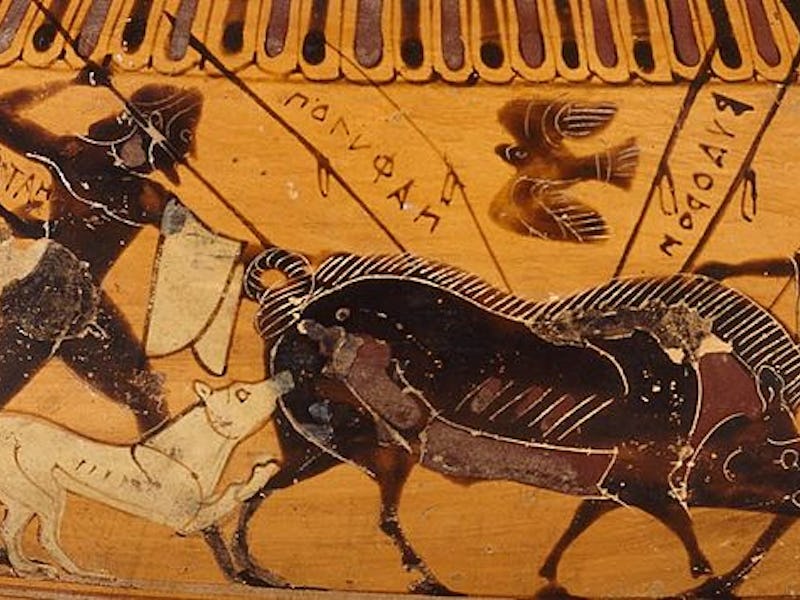Ancient Genetic Data Reshapes Theories About How Humans Populated the Earth
Human migration wasn't always consistent.

Humans have been leaving home in search for new opportunities for thousands of years, but their ancient migration patterns have always been somewhat difficult to trace. Until recently, the main clues researchers have used to map the historic flow of ancient humans have been artifacts and analyses of ancient bones, but these haven’t always given a clear picture of how humans populated the Earth.
On Monday, however, a team of United Kingdom-based geneticists and anthropologists reported in a Proceedings of the National Academies of Sciences study that they’ve come up with a new method of mapping these routes that takes into account genetic data. Their new analysis suggests the migration of humans over the last 14,000 years is more complicated than scientists previously realized.
Co-author and Cambridge University professor Marta Mirazòn Lahr, Ph.D. said in a statement that old assumptions about the migration patterns of ancient humans are now being called into question. The study confirms a strong link between technological change and human mobility, but it also points out that that the hunter-gatherers who lived in Europe after the peak of the last Ice Age were far less mobile than previously believed, as Lahr explains:
These are fascinating results — we associate a hunting and gathering lifestyle with nomadism and high mobility, and the development of the first farming villages and towns with sedentary societies. Yet, early farmers were on the move in search of more and more land to match their progressively larger populations, while the post-glacial hunters seemed to have met their needs locally.
Rise in mobility has occurred in at least three distinct pulses.
The new method, which required the creation of a 2D model that incorporated population dynamics data, confirms the theory that human migration has been on the rise since the beginning of the Holocene era (which began approximately 11,700 years ago) but suggests that it happened in “three distinct pulses,” rather than gradually.
The three major “pulses” of migration Lahr and her team identified matched up with the Neolithic period, the Bronze Age, and the Iron Age. The Neolithic period, which is when when agriculture and animal domestication first spread, saw a “well-known population expansion” that peaked around 7,500 years ago, the authors write. The other two peaks that the analysis identified were not as clearly defined by previous research: The peak during the Bronze Age, the period when complex civilizations in places like Mesopotamia and Egypt emerged and trade routes between Asia and Europe were established, happened about 5,000 years ago. The third migration pulse, the Iron Age, began around 3,200 years ago and witnessed a surge in European population sizes and global trade and warfare.
The famous Hanging Gardens of Babylon were created during the Bronze Age.
Because the new model was capable of creating spatiotemporally explicit simulation, the researchers were also able to compare the mobility of people between different time periods and different regions.
“One of the great features of this new method is that it can be used not only on genetic data, but also on the variation in the shape of ancient fossils,” explained co-author and University of Oxford graduate student Liisa Loog in a statement. “This means that the mathematical framework behind our method can easily be extended beyond the study of human movement: We can now explore changes in migration rates through time in animals are long extinct.”
Understanding ancient migration is particularly important for academics because it reveals not only how cultures are shaped by movement but explains how our current genetic profiles came to be. The authors hope that subsequent analysis of their findings will explain the variations of human genetic, morphological, and cultural traits. The Holocene era, which this model draws this data from, has witnessed the rise and fall of all human civilizations and is still the era we’re living in — and understanding the movements of our ancestors during this time will very likely help us understand ourselves better in the future.
If you liked this article, check out this video on how genes related to higher education are becoming more scarce.